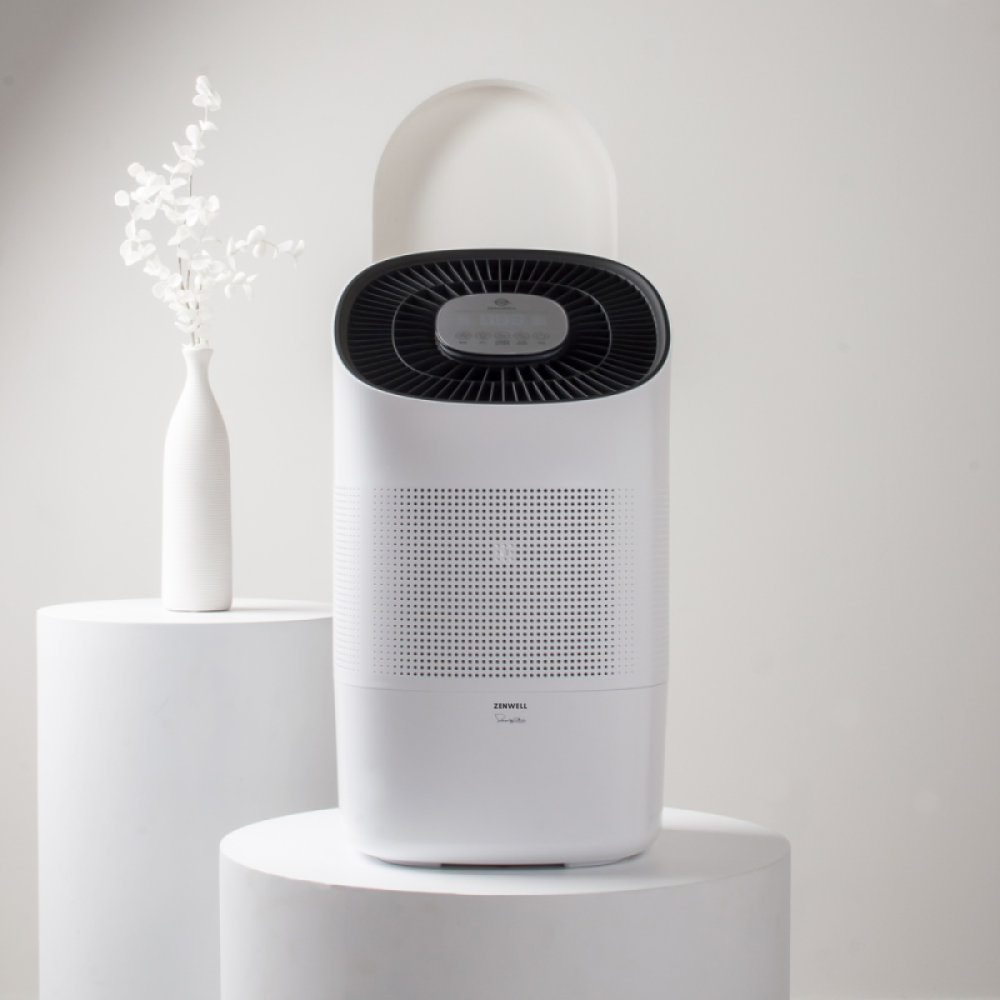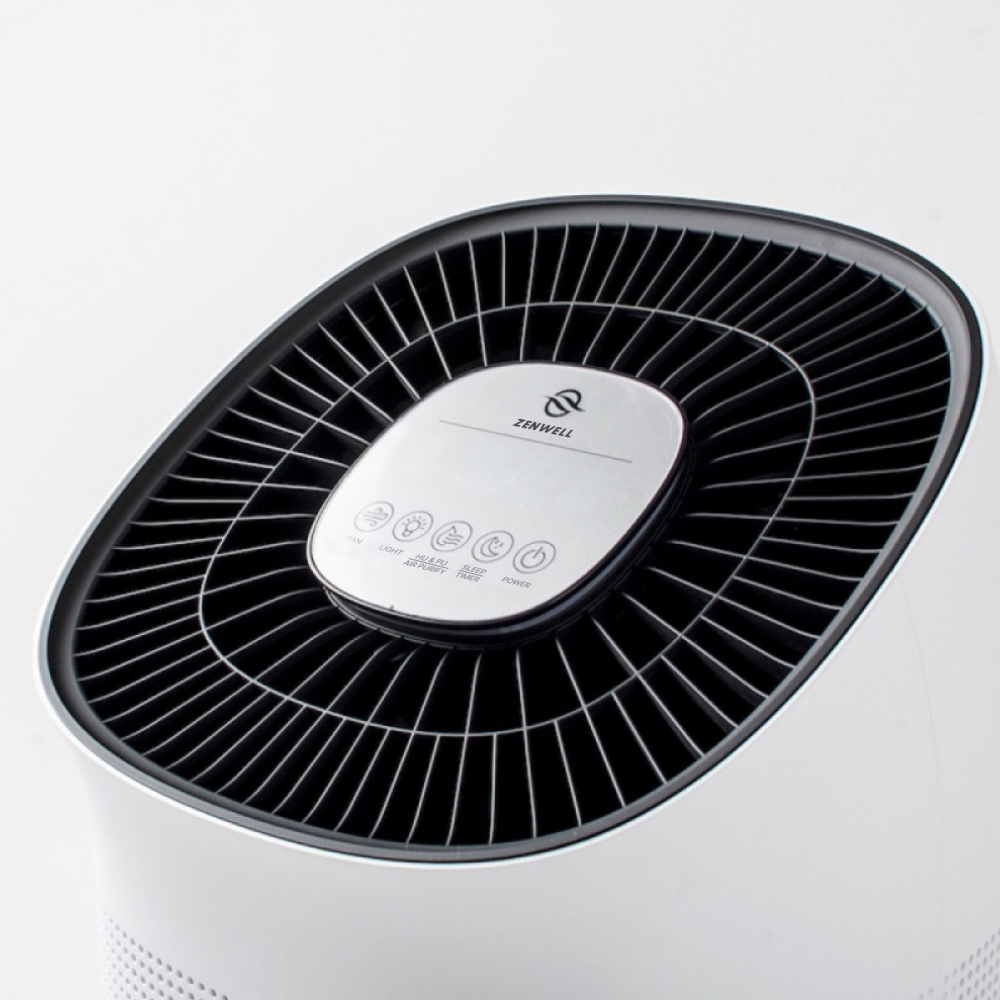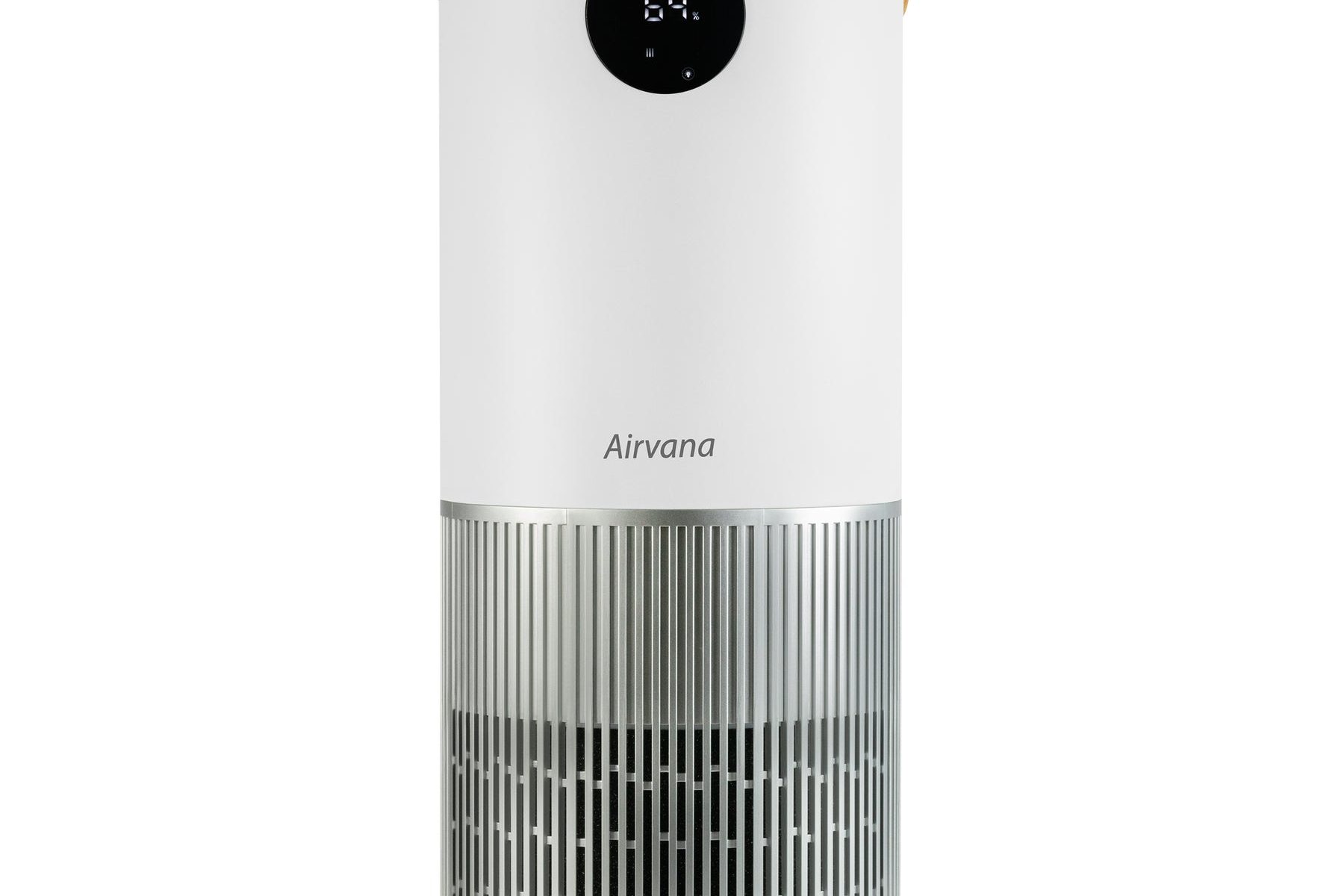Maintaining indoor air quality is crucial for overall health and comfort. Two common devices used to improve indoor air conditions are air humidifiers and air purifiers. Each has distinct features and serves different purposes. Consequently, understanding the functions, benefits, and difference between air humidifier and air purifier can help you decide which is best suited to your needs. Therefore, this comprehensive guide explores the core functions of air humidifiers and air purifiers, their respective benefits, and how to choose the right device for your home. By delving into these aspects, you can make an informed decision and enhance the air quality in your living environment.

Understanding Air Humidifiers
Air humidifiers are designed to add moisture to the air, addressing issues related to dry indoor environments. Understanding their core functions and benefits highlights their importance in maintaining optimal humidity levels. Therefore, exploring the basics of air humidifiers is essential.
Core Functions of Air Humidifiers
Air humidifiers work by releasing water vapor or steam into the air to increase humidity levels. They come in various types, including ultrasonic, evaporative, and steam vaporizers, each employing different methods to disperse moisture. Appropriate humidity levels, typically between 30% to 50%, are crucial for a comfortable and healthy indoor environment. Low humidity can lead to dry skin, irritated respiratory passages, and increased static electricity. By using an air humidifier, you can maintain an ideal humidity level, alleviating these issues and creating a more comfortable living space. Therefore, understanding the core functions of air humidifiers provides insight into their significance.
Benefits of Using an Air Humidifier
The benefits of using an air humidifier extend beyond mere comfort, impacting health and home maintenance positively. Humidifiers help relieve symptoms of dry skin, chapped lips, and dry throat, particularly during the winter months when indoor heating reduces humidity levels. They can also ease respiratory discomfort caused by colds, allergies, or asthma by keeping mucous membranes moist. Additionally, maintaining proper humidity levels can prolong the life of wooden furniture and musical instruments, preventing cracking and warping. Plants also thrive in environments with adequate humidity. By incorporating an air humidifier into your home, you enhance overall comfort and well-being. Therefore, recognizing the benefits of air humidifiers underscores their value.

Understanding Air Purifiers
Air purifiers focus on removing airborne pollutants, improving air quality by eliminating particles and allergens. Understanding their core functions and benefits helps in appreciating their role in maintaining clean air. Therefore, exploring the basics of air purifiers is essential.
Core Functions of Air Purifiers
Air purifiers work by drawing in air, passing it through filters to capture pollutants, and then circulating clean air back into the room. They typically use HEPA filters, which can trap particles as small as 0.3 microns, such as dust, pollen, pet dander, and smoke. Some air purifiers also include activated carbon filters to reduce odors and volatile organic compounds (VOCs). By continuously filtering the air, these devices reduce indoor pollutants, providing cleaner and healthier air. Understanding the core functions of air purifiers highlights their importance in maintaining good indoor air quality. Therefore, recognizing their role in pollutant removal is crucial.
Benefits of Using an Air Purifier
The benefits of using an air purifier are significant, particularly for individuals with allergies, asthma, or respiratory issues. Air purifiers help remove allergens and irritants that can trigger symptoms, providing relief and improving overall health. They also reduce the presence of harmful particles like mold spores, bacteria, and viruses, contributing to a healthier indoor environment. Additionally, by eliminating smoke and cooking odors, air purifiers enhance the freshness of your living space. Overall, air purifiers create a cleaner and healthier atmosphere, benefiting both your health and comfort. Therefore, recognizing the benefits of air purifiers underscores their importance for indoor environments.

Comparing Air Humidifiers and Air Purifiers
Understanding the air humidifier and purifier difference comparing their functions, benefits, and potential drawbacks. This comparison helps in determining which device is suitable for your needs. Therefore, exploring the key difference between air purifier and air humidifier is crucial.
Functional Differences
Air humidifiers and air purifiers serve distinct purposes, addressing different aspects of indoor air quality. Air humidifiers are designed to increase humidity levels by adding moisture to the air. They focus on alleviating issues caused by dry air, such as dry skin, respiratory discomfort, and static electricity. Air purifiers, on the other hand, aim to cleanse the air by removing airborne pollutants and allergens. They focus on improving air quality by capturing particles like dust, pollen, and pet dander. These functional differences highlight that each device targets different indoor air quality concerns. Therefore, understanding these distinctions is essential for informed decision-making.
Benefits Comparison
While both air humidifiers and air purifiers offer benefits, they cater to different needs. Air humidifiers provide relief from dry air-related issues, enhancing comfort and supporting respiratory health. They are particularly beneficial in arid climates and during winter months. Air purifiers, however, focus on improving air quality by removing pollutants, which is crucial for individuals with allergies, asthma, or respiratory conditions. They create a cleaner environment by reducing allergens, bacteria, and odors. Comparing these benefits helps you determine which device aligns with your specific health and comfort needs. Therefore, recognizing the different benefits each device offers aids in making the right choice.
Choosing Between an Air Humidifier and an Air Purifier
Selecting between an air purifier vs air humidifier depends on your specific needs and the issues you aim to address. Understanding the factors to consider ensures a well-informed decision. Therefore, exploring guidelines for choosing the right device is essential.

Assessing Your Indoor Air Quality Needs
First, assess your indoor air quality needs by identifying the primary concerns in your living space. If you experience discomfort from dry air, such as dry skin, cracked lips, or respiratory irritation, an air humidifier might be the solution. Conversely, if you suffer from allergies, asthma, or notice excessive dust and odors, an air purifier would be more beneficial. Consider the specific symptoms and issues you aim to alleviate, as this assessment guides you toward the appropriate device. By focusing on your primary indoor air concerns, you make an informed decision that enhances your comfort and health. Therefore, assessing your needs is a crucial step in choosing the right device.
Considering Environmental Factors
Environmental factors, such as climate and room conditions, play a significant role in determining which device will be most effective. In dry or arid climates, low humidity levels can exacerbate dry air issues, making an air humidifier essential. On the other hand, urban areas with high pollution levels or households with pets and smokers may benefit more from an air purifier. Additionally, the size of the room and existing ventilation should be considered. Larger rooms may require devices with higher output capacities, while well-ventilated spaces might need less intensive solutions. Considering these environmental factors ensures the chosen device addresses your specific conditions effectively. Therefore, evaluating environmental factors is important for making the right choice.
Integrating Both Devices for Optimal Indoor Air Quality
In some cases, integrating both an air humidifier and an air purifier can provide comprehensive solutions for your indoor air quality needs. Understanding how to use both devices effectively ensures maximum benefits. Therefore, exploring the integration of both devices is essential for optimal indoor air quality.

Complementary Roles
Air humidifiers and air purifiers serve complementary roles in maintaining indoor air quality, each addressing different aspects of air health. By combining both devices, you can achieve a balanced environment with adequate humidity levels and reduced pollutants. For instance, using an air purifier to remove airborne particles and an air humidifier to maintain proper humidity levels creates a healthier and more comfortable living space. This combination is particularly beneficial in households with diverse needs, such as those with children, elderly individuals, or pets. Understanding the complementary roles of these devices highlights the advantages of using both. Therefore, integrating both devices can provide comprehensive air quality solutions.
Placement and Usage Tips
To maximize the benefits of using both an air humidifier and an air purifier, consider the following placement and usage tips:
- Separate Placement: Place the devices in different areas of the room to ensure optimal performance. Avoid placing them too close to each other, as the moisture from the humidifier could affect the air purifier’s filters.
- Room Size Consideration: Ensure both devices are suitable for the room size. Larger rooms may require multiple units for effective coverage.
- Maintenance: Regularly maintain both devices by cleaning and replacing filters and water reservoirs as needed. Proper maintenance ensures their continued effectiveness.
- Usage Timing: Use the air purifier continuously to maintain clean air and the air humidifier during dry periods to maintain optimal humidity levels.
By following these tips, you can effectively integrate both devices into your home, enhancing indoor air quality comprehensively. Therefore, proper placement and usage are crucial for maximizing the benefits of both devices.
Common Misconceptions About Air Humidifiers and Air Purifiers
Addressing common misconceptions about air humidifiers and air purifiers provides clarity and helps in making informed decisions. Dispelling these myths ensures a better understanding of their functions and benefits. Therefore, exploring common misconceptions is important for accurate comprehension.
Misconception: Air Humidifiers Purify Air
A common misconception is that air humidifiers can purify the air. In reality, air humidifiers add moisture to the air but do not remove pollutants or allergens. Their primary function is to alleviate dry air-related issues, not to cleanse the air. To remove pollutants, an air purifier is required. By understanding the distinct functions of these devices, you can choose the appropriate one for your needs. Therefore, recognizing that air humidifiers do not purify air dispels this common myth.
Misconception: Air Purifiers Control Humidity
Another misconception is that air purifiers can control humidity levels. Air purifiers are designed to remove airborne particles and do not add or remove moisture from the air. Their function focuses on improving air quality by capturing pollutants, not regulating humidity. For humidity control, an air humidifier is necessary. By understanding the specific roles of air purifiers, you can address air quality and humidity concerns separately. Therefore, recognizing that air purifiers do not control humidity dispels this misconception.
Conclusion: Choosing the Right Device for Your Air Quality Needs
Air humidifiers and air purifiers each play essential roles in maintaining indoor air quality, addressing distinct aspects of air health. Understanding the core functions and benefits of air humidifiers highlights their importance in maintaining optimal humidity levels.
Exploring the functions and benefits of air purifiers emphasizes their role in removing airborne pollutants and improving air quality. Comparing the difference between air humidifier and purifier helps in determining which one aligns with your specific needs.
Assessing your indoor air quality needs and considering environmental factors guide you toward making an informed decision. Integrating both devices can provide comprehensive solutions, addressing both humidity and air purity for a healthier living environment.
Addressing common misconceptions provides clarity and ensures a better understanding of their distinct functions and benefits. By embracing these aspects, you can make an informed decision, choosing the right device to enhance your indoor air quality.
Therefore, whether you need an air humidifier, an air purifier, or both, understanding their functions and benefits ensures a healthier and more comfortable living space. Enjoy the improved indoor air quality and the health benefits that come with choosing the right device!

